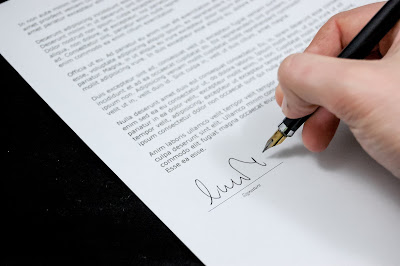You can use copywriting even when you're planning out your flyer distribution service.
Step-by-Step Sales Letter Writing
Understanding your customer is the first topic of the book and probably because its the most important. The mailing lists that you use should have several pieces of information such as age, income, hobbies, and even political affiliations.The next step is to try and get into the head of the customer. What do they want the most? What is the most pressing issue in their life?
Once you find this out, you have to fully understand your offer better than anyone. This should almost go without saying but thinking that you already know enough is a flaw.
Know the benefit of your product. Your customer doesn’t really care about how your window cleaning services use specific types of cleaners.
They want to know that it’ll make the storefront more presentable and give it a cleaner look for the pedestrians passing by.
After you’ve found out what your product/service can do. It’s time to find out what it CAN’T do and address it. The reason why is you want to talk about any and every objection a customer might have. We’ve all heard that saying “if it’s too good to be true..” you know the rest.
Direct Mail Formatting
There’s things that must happen for someone to be converted from unknown prospect to customer.- The message you send must be delivered. There’s a few things that can go wrong here. Post office might screw up. Dog ate the mail. You name it.
- Now the recipient is sorting through their mail. Whatever looks like junk will probably be thrown in the trash, where it belongs! Here’s where a lot can go wrong and the design of your letter can play a huge role in whether your letter gets opened.
- They’ve decided that your letter can be of importance or use. They open it and take a 5 seconds MAXIMUM glance and it’s at this point we have to hook them.
The process below is how to convert your prospects and it can easily transfer in person sales as well.
- Attention: You grab their attention by speaking about something that they value and benefit from. There’s really no other way. Most bad sales letters start talking about the features that their product/service offers but it doesn’t relate back to the prospect. Using headlines is the number one way to grab attention and any sales letter or advertisement should have a good one.
- Interest: You create the interest right after you grab their attention. Give them just enough information to want to learn more and keep reading the letter.
- Desire: You create a feeling of desire when you create an emotional image for the prospect. Get them to connect emotionally to your offer and you have a small window of opportunity to push them through.
- Action: Always have a call to action. They might have to call in, visit a website, or send a letter back. Whatever it is maybe it has to be urgent and addressed clearly.
Selling Strategies
Dan Kennedy outlines three strategies that you can use that will motivate a prospect to buy. We’ll outline them below with a brief description of each. Keep in mind this isn’t the be all and end all of the selling strategies but if they work for one of the greatest copywriters of all time then they should work for us too.Strategy 1: Fear motivation
The first strategy that Dan talks about is seen through a lot of sales and psychology literature. Its because it works. There’s a consensus that people move away from pain and towards anything that benefits them. It's a basic human principle. Here’s the step-by-step as detailed by Dan Kennedy:Step 1: Identify the problem.
It doesn’t matter whether the prospect knows they have the problem. What matters is that you present it in a way that it affects them.
Step 2: Inject Emotion
Now that they’ve identified with the problem, you have to get them riled up about it. This can be fear, anger, resentment, embarrassment, or a whole other slew of emotions.
Step 3: Now that they are in an emotional state, we have to present our solution. Your customer is furious right now and wants the answer to the problem. This is when we ask them to take action and if we do it at the right time, they will.
Strategy 2: Painting a Vision
The second strategy is based on telling the future. It isn’t what you’re thinking, fortune telling. If you can clearly paint a picture of the near future for a prospect you can get them to make some purchasing decisions. If you had to sell solar panels for homes you can talk about how electric bills will rise in the future and provide enough facts and statistics to back this up. In essence, you’re creating a problem and offering a solution in the form of a vision.Strategy 3: Winners vs Losers
The third strategy is the winners and losers strategy. Basically, you outline statistics of people prospering or “winning” as opposed to a larger majority that is “losing”. No one wants to be a loser and no one wants to fall behind simply because they don’t know what they should be doing. In this case, the small minority “winners” are doing something related to your product or service which is giving them success.If you want an introduction to advertising please click the link!

No comments:
Post a Comment